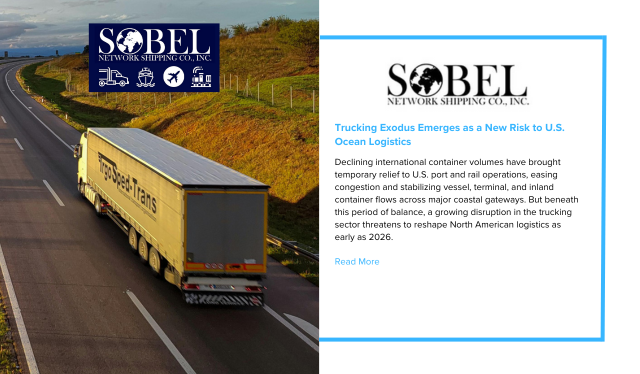Declining international container volumes have brought temporary relief to U.S. port and rail operations, easing congestion and stabilizing vessel, terminal, and inland container flows across major coastal gateways. But beneath this period of balance, a growing disruption in the trucking sector threatens to reshape North American logistics as early as 2026.
Industry analysts warn that while ocean carriers and port operators are benefiting from lower volumes today, the U.S. trucking ecosystem is facing significant structural strain. An extended freight recession has driven down rates, increased operating costs, and triggered a surge in carrier shutdowns and bankruptcies. The result is a rapidly shrinking pool of available domestic trucking capacity at a time when shippers are preparing for future demand shifts.
Compounding this issue are new federal regulatory initiatives targeting non-domiciled Commercial Driver’s License (CDL) holders and tightening English Language Proficiency (ELP) requirements. Transportation economists estimate that up to 600,000 drivers could ultimately be removed from the U.S. driver pool due to heightened enforcement — representing one of the most consequential contractions in the modern trucking labor force.
Early signs of market response are already visible. November saw a noticeable uptick in trucking activity along the Pacific Coast, a likely indication that shippers are repositioning assets or securing capacity ahead of potential disruptions. If this trend accelerates, it could have cascading effects on drayage operations, intermodal transport, and inland distribution networks in 2026.
For now, calmer ocean volumes have helped maintain smooth operations at U.S. ports, but that relief may be short-lived. As the trucking industry undergoes rapid consolidation and regulatory pressure intensifies, trucking capacity — not vessel throughput — may soon become the defining factor in U.S. supply chain reliability.


